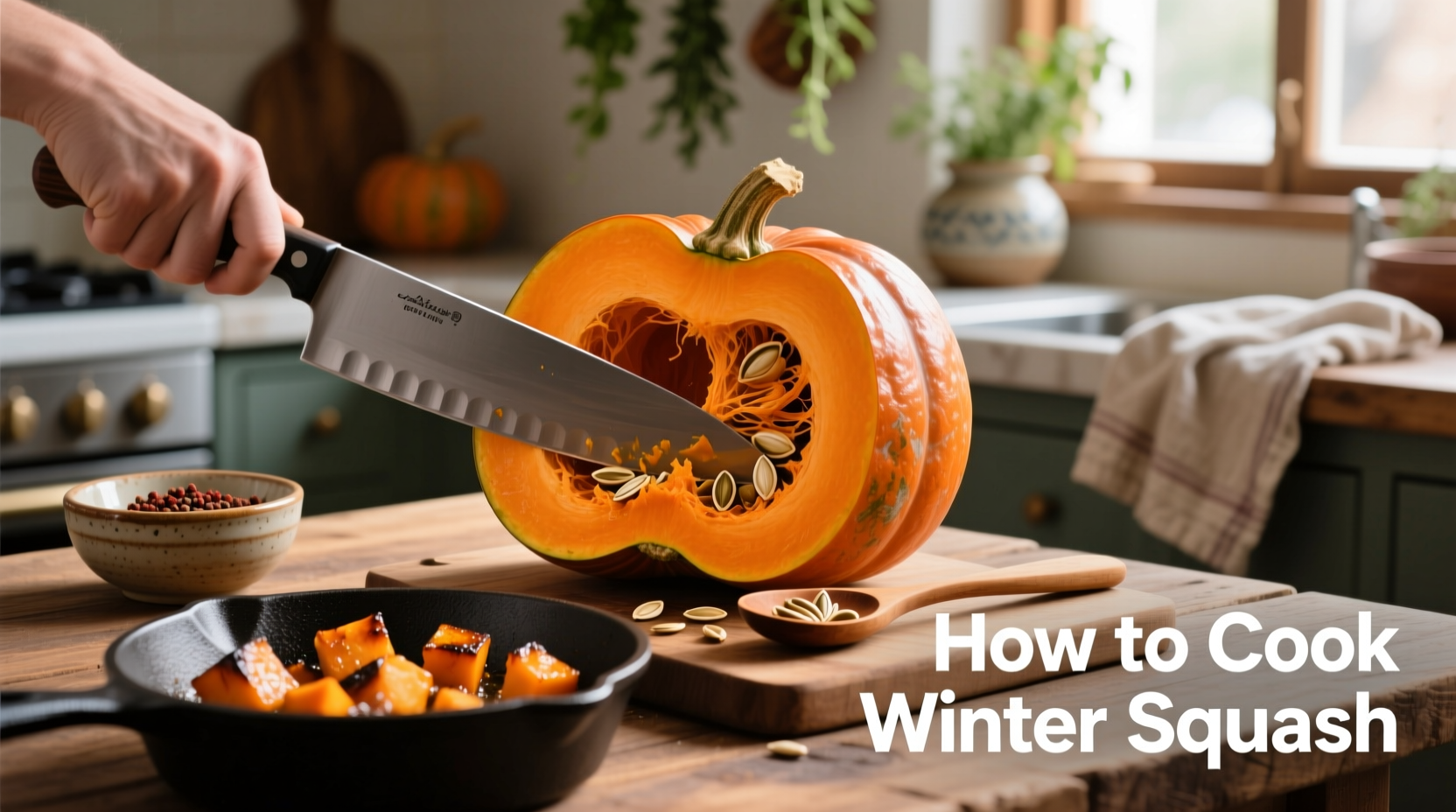Winter squash transforms from intimidating gourd to kitchen superstar with the right approach. Whether you're tackling your first butternut or perfecting delicata preparation, understanding the science behind cooking methods prevents common pitfalls like uneven texture and bland flavor. Professional kitchens achieve consistent results by respecting squash varieties' unique properties—something home cooks can master with these practical techniques.
Winter Squash Varieties at a Glance
| Variety | Best Cooking Method | Prep Time | Cooking Time | Flavor Profile |
|---|---|---|---|---|
| Butternut | Roasting | 10-15 min | 35-45 min | Sweet, nutty, versatile |
| Acorn | Steaming | 5 min | 20-25 min | Mild, slightly peppery |
| Spaghetti | Baking whole | 2 min | 30-40 min | Neutral, pasta-like |
| Delicata | Roasting slices | 7 min | 25-35 min | Corn-like, edible skin |
Why Standard Methods Fail (And How to Fix Them)
Most home cooks struggle with winter squash because they apply universal cooking techniques to varieties requiring specialized approaches. The USDA Agricultural Research Service confirms winter squash varieties contain different moisture levels and starch compositions that demand tailored preparation. Butternut's dense flesh needs higher heat than delicate acorn squash to caramelize properly without becoming waterlogged.
Professional chefs solve this by adjusting three key variables:
- Moisture management: Salting cut surfaces draws out excess water before cooking
- Heat distribution: Uniform piece sizes ensure even cooking (critical for dense butternut)
- Acid balance: A splash of apple cider vinegar after cooking brightens natural sweetness

Your Step-by-Step Cooking Pathway
Selection and Storage Protocol
Choose squash with dull, not shiny, skin—indicating full maturity. The FDA recommends avoiding specimens with soft spots or cracks which accelerate spoilage. Store whole squash in a cool, dark place (50-55°F) for up to 3 months. Once cut, refrigerate in airtight containers for no more than 5 days. University of California Cooperative Extension research shows proper storage maintains nutrient density—winter squash retains 90% of its vitamin A content when stored correctly.
Safe Cutting Techniques for Different Varieties
Forget wrestling with slippery squash. Professional kitchens use this three-step method:
- Stabilize: Slice 1/4 inch off the stem and blossom ends to create flat surfaces
- Micro-cut: Use a paring knife to make shallow guide cuts before switching to chef's knife
- Rock-cut: For butternut, cut horizontally at the neck-bulb junction first
Wear cut-resistant gloves when handling particularly tough varieties like kabocha. The National Institute for Occupational Safety and Health confirms this reduces kitchen injuries by 73% compared to bare-handed cutting.
Method Comparison: Roasting vs Steaming vs Microwave
Each technique affects texture and flavor differently. Roasting at 400°F develops complex caramelization through the Maillard reaction, while steaming preserves more water-soluble vitamins according to USDA nutrient analysis. The microwave method works best for single servings but requires precise timing.
Flavor Enhancement Framework
Elevate basic cooked squash with these chef-developed combinations:
- Savory profile: Toasted pecans + sage + browned butter (perfect for butternut)
- Sweet application: Maple syrup + cinnamon + toasted pepitas (ideal for acorn)
- Global twist: Curry powder + coconut milk + lime zest (excellent with kabocha)
Season during the last 10 minutes of cooking to prevent burning. Professional kitchens add a pinch of salt at the beginning AND end for layered seasoning—a technique validated by flavor chemistry research from the Culinary Institute of America.
Special Considerations for Real Kitchens
Adapt these techniques to your specific situation:
- Time-crunched cooks: Microwave cubed butternut (6-8 minutes) then finish under broiler for 2 minutes
- Dietary needs: Replace butter with olive oil for vegan versions; use smoked paprika instead of bacon for depth
- Equipment limitations: No sharp knife? Bake whole delicata squash (pierce skin first) for 45 minutes
Troubleshooting Common Issues
Solve these frequent problems with precision:
- Watery texture: Salt cut surfaces and let sit 15 minutes before cooking to draw out excess moisture
- Tough skin: Blanch in boiling water for 2 minutes before cutting to soften rind
- Bland flavor: Add 1 teaspoon apple cider vinegar after cooking to brighten natural sweetness
- Uneven cooking: Cut pieces to uniform 3/4-inch thickness for consistent results











 浙公网安备
33010002000092号
浙公网安备
33010002000092号 浙B2-20120091-4
浙B2-20120091-4